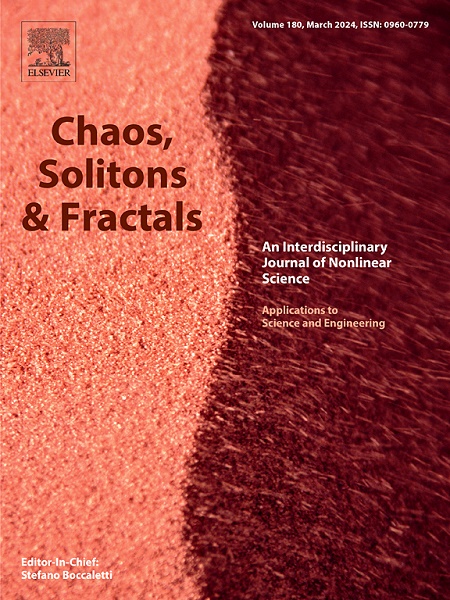感知不确定性下网联自动驾驶车辆交通流的稳定性与协同性分析
IF 5.3
1区 数学
Q1 MATHEMATICS, INTERDISCIPLINARY APPLICATIONS
引用次数: 0
摘要
本研究旨在探讨在感知不确定性环境下,网联自动驾驶汽车(cav)交通流的稳定性与协同性。具体而言,提出了一种扩展版的协同智能驾驶员模型(CIDM),即加权动态CIDM (WD-CIDM),用于描述感知不确定性下CAV交通流的动态特性。所提出的模型包含感知不确定性水平,以量化各种控制输入偏离其真实值的程度,同时引入加权参数来捕获系统内不同程度的感知可靠性下CAV交通流模式的频谱。特别是,利用实时交互车辆数量来反映CAV的合作能力,从而可以评估CAV交通流中感知不确定性、合作性和稳定性之间的相互作用。然后,采用头尾传递函数法推导了稳定性判据。灵敏度分析表明,速度和相对速度的正不确定性水平增强了稳定性,而间隙的正不确定性水平和较高的权重参数降低了稳定性。相应地,这些不确定性的负水平具有相反的效果。另一个有趣的发现是,虽然增加互动车辆的数量有助于稳定交通流量,但边际效益随着规模的增加而减少。开放边界条件下的数值试验通过考察交通流的动态演化和间距误差的变化,验证了稳定性分析的正确性。此外,本文还揭示了感知不确定性下CAV交通流的一个内在权衡:不能同时保证强合作和高稳定性。本文章由计算机程序翻译,如有差异,请以英文原文为准。
Analysis of stability and cooperation in traffic flow with connected automated vehicles under perceptual uncertainty
This study aims to investigate the stability and cooperation of traffic flow comprising connected automated vehicles (CAVs) in perceptual uncertainty environment. Specifically, an extended version of the cooperative intelligent driver model (CIDM), referred to as the weighting dynamic CIDM (WD-CIDM), is developed to describe the dynamics of CAV traffic flow under perceptual uncertainty. The proposed model incorporates perceptual uncertainty levels to quantify the extent to which various control inputs diverge from their true values, while introducing a weighting parameter to capture a spectrum of CAV traffic flow patterns under varying degrees of perceptual reliability within the system. Especially, the real-time number of interactive vehicles is leveraged to reflect CAV's cooperative capability, allowing for the evaluation of the interplay between perceptual uncertainty, cooperation, and stability in CAV traffic flow. Then, a head-to-tail transfer function approach is applied to derive the stability criterion. Sensitivity analysis shows that positive uncertainty levels in velocity and relative velocity enhance stability, whereas positive gap uncertainty level and higher weighting parameter reduce stability. Correspondingly, negative levels of these uncertainties have the opposite effects. Another interesting finding is that, while increasing the number of interactive vehicles helps stabilize traffic flow, the marginal benefit diminishes with scale. Numerical tests with an open boundary condition validate the stability analysis by examining both the dynamic evolution of traffic flow and the variations in spacing error. Furthermore, an inherent trade-off in CAV traffic flow under perceptual uncertainty is revealed: strong cooperation and high stability cannot be simultaneously ensured.
求助全文
通过发布文献求助,成功后即可免费获取论文全文。
去求助
来源期刊

Chaos Solitons & Fractals
物理-数学跨学科应用
CiteScore
13.20
自引率
10.30%
发文量
1087
审稿时长
9 months
期刊介绍:
Chaos, Solitons & Fractals strives to establish itself as a premier journal in the interdisciplinary realm of Nonlinear Science, Non-equilibrium, and Complex Phenomena. It welcomes submissions covering a broad spectrum of topics within this field, including dynamics, non-equilibrium processes in physics, chemistry, and geophysics, complex matter and networks, mathematical models, computational biology, applications to quantum and mesoscopic phenomena, fluctuations and random processes, self-organization, and social phenomena.
 求助内容:
求助内容: 应助结果提醒方式:
应助结果提醒方式:


